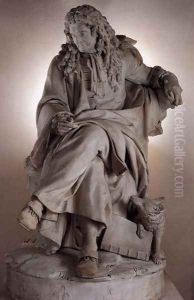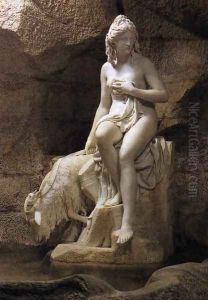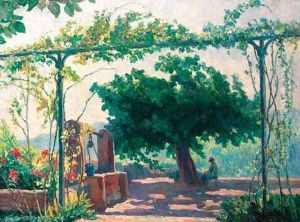Pierre Julien Paintings
Pierre Julien was a French sculptor born on June 20, 1731, in Saint-Paulien, a small town in the Haute-Loire region of France. He was known for his classical style and particularly for his work in marble. Julien's talent became evident at a young age, and he began his artistic training in his early years.
In 1755, Julien moved to Paris to further his education and became a student of Guillaume Coustou the Younger, a prominent sculptor of the time. After honing his craft for several years, he competed for the prestigious Prix de Rome, a scholarship for arts students to study at the French Academy in Rome. Julien won the prize in 1765, which allowed him to study in Rome from 1768 to 1773. This period was crucial for his development as an artist, as he was exposed to the masterpieces of classical antiquity and the works of the Renaissance.
Upon returning to France, Julien quickly began to receive commissions. One of his most notable works is the statue of 'Amalthea and Jupiter's Goat', which he created for the dairy at Rambouillet for King Louis XVI. In this work, Julien displayed his skillful handling of marble to render the softness and texture of skin and fur, a testament to his mastery of the neoclassical style.
Julien's other significant works include his contributions to the decoration of the Royal Opera of Versailles and his statue of 'Gladiator at Rest', which earned him admission to the French Royal Academy of Painting and Sculpture in 1778. As an esteemed member of the Academy, he was involved in various important projects and held the position of professor from 1785 until his death.
Pierre Julien's career was marked by his dedication to the classical ideals of beauty and his ability to convey delicate details and emotional depth in his sculptures. His works were celebrated for their elegance and refinement, and he was a respected figure among his contemporaries in the art world.
Julien died on December 17, 1804, in Paris. His legacy is preserved in the numerous sculptures he left behind, which continue to be admired for their technical proficiency and artistic beauty. Julien remains an important figure in the history of French sculpture, representing the neoclassical movement at its finest during the late 18th century.


